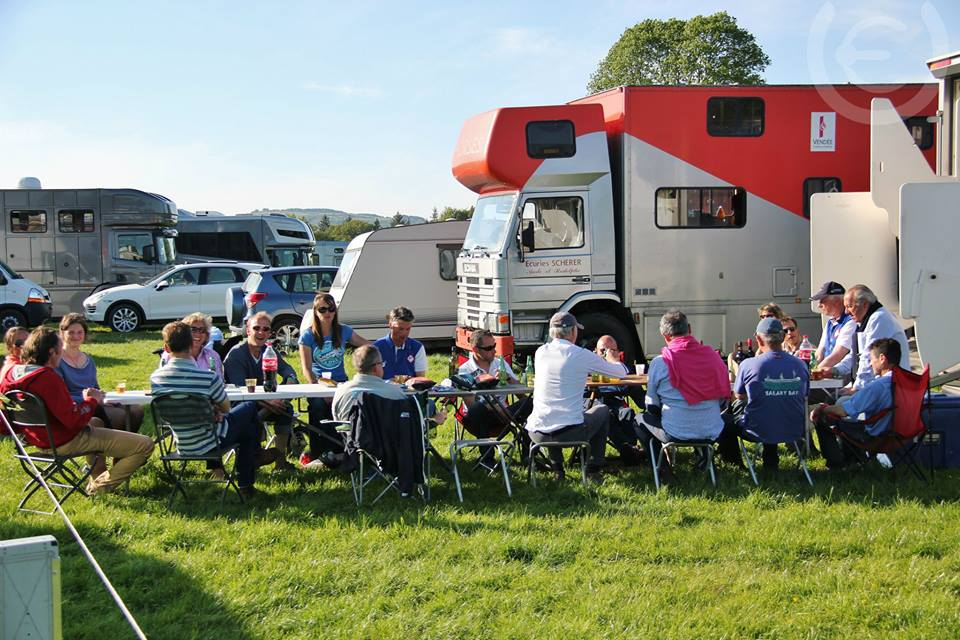Any professional sports rider or ambitious amateur can easily agree with the following steps. Those that could be compared with the life of a stallholder, constantly on the road in his truck, with the aim of bringing (himself) joy, tears, and laughter. Unlike the sporting aspect, which demands organization and rigor, key factors in performance. How do you manage life at the show? How do you juggle the professional and the social, in an ephemeral micro-city where everything blends? Welcome to the world of “sporartists”…

The start of a new adventure in horse racing
Even if the start of a new competition begins with the excitement of the administrative formalities involved in entering a show, the serious stuff starts the day before you set off. Whether for a day, a week, in France or abroad. The watchword? Routine. Not the kind that scares you, but the kind that leads to success. Sunday night’s victory is won before you leave. The artist makes his sketch, the rider his checklist. The rider’s equipment, the horse’s equipment, and that of the stables. The horse’s booklet being the last thing to be forgotten. Once the truck was ready and the horses groomed, all that remained was to wait for the long-awaited early morning departure. And off we go, with the mood in the right place on the road, all hopes are still high. For the trainers and completists, it’s back to the drawing board. You find out the exact program of the competition before drawing up your own schedule with the whole of your accompanying team, to avoid confusion as much as possible when you get there. Then you take the time to call your friends/competitors who are converging on the same ring. Once you’ve arrived, you mark your territory in the rider parking area, and the first task is to get the horses comfortable as quickly as possible and prepare their boxes and stalls. This is followed by setting up your “home” for the duration of the competition. Even before entering the competition for good, and completing the dress rehearsals before the stage, the rider discovers and takes possession of the premises, settling the last administrative points at the secretary’s office.
The competition rider in full swing
Things speed up once the competition gets underway, which is why it’s so important to stick to your own schedule, remember your goals and stay in your “bubble”. Horseback riding during training sessions, relaxing, isolating yourself to stay focused or chatting with friends and family to decompress, staying on the lookout for information – everyone has their own personality. Course reconnaissance is one of the most important moments of the day. The question is, how many? Let’s recommend three, the first called “discovery”, alone or with friends. A second, called “technical”, with trusted trainers or competitors, to discover all the specific features of the course. And a third, called “summary”, to be done alone for maximum concentration and situational awareness. And as late as possible for cross-country riders, to assimilate all modifications (ropes, options, etc.) made by the organizer. With the start of the show approaching, all that’s left to do is anticipate the material preparation of horse and rider, so as not to leave anything to chance. Then there’s what we might call the fourth stage of reconnaissance, the preparation and visualization of the course, just like the skier before the descent. A word of advice: take advantage of the last “toilet break” for this one. The time has come to mount up, the countdown has started, and the bell has rung.
Away from the horse, one meeting follows another, with briefings, welcome cocktails, rider evenings, meetings with sponsors, owners, family, friends, judges, supporters, volunteers, and organizers. And then there’s the life, like a country village that finds itself in a new region every weekend. It’s a life that takes its course at the end of the day, after the effort comes the comfort. The competition’s refreshment bar takes on the charm of the town hall’s watering hole, the topics of conversation diverge and invitations to dine in the trucks flourish. The parking lot takes on the appearance of a housing estate, where families, friends and young people gather to celebrate, whether as bellhops, riders, owners, or volunteers… So many reasons to keep coming back to the competition.
The show ends: the troops return home
The last moments arrive tired from the competition, goals achieved, preparation for the journey home. The winners, the losers, the always happy. The atmosphere of “it’s only goodbye” and the famous “what’s next for you? Then it’s back to the team and the road home, time for an on-the-spot debriefing of the results and sharing of past emotions. Looking forward to getting your horse back into the stall before the next event.
How many days of competition does a professional rider have?
For many of them, it’s over 200 days a year. The detail of performance, quantity and experience all help to optimize this “routine”, which is essential to the well-being of the horses and acts as a “doubt vacuum cleaner” for the rider. Rehearse at every competition, with every horse, in every event, necessarily adding any questions from the time before and adapting to the moment. All the while enjoying the moment, whether on horseback or in the village pub.


